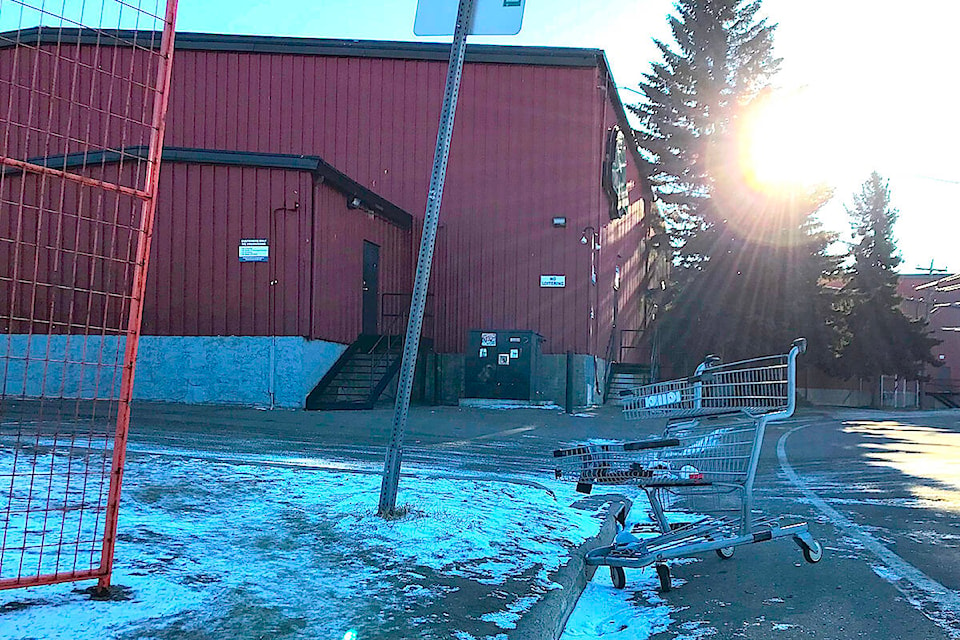Moving Red Deer’s largest homeless shelter to an industrial location would create more problems than it solves, predicts a Calgary shelter director.
Instead of crime being committed under the watch of a designated downtown police foot patrol, it will happen in a remote, less well-lit area, said Andrew Millar, basic services program director of The Mustard Seed’s Foothills Shelter.
“People will be stealing sheet metal because there will be less eyes on the problem… people will be overdosing in the rail yards, which is not really what you want…”
Related:
‘There will be a clean slate’: Proposed riverfront shelter site is nixed by Red Deer city council
Millar’s facility for unhoused clients is 13 km away from Calgary’s downtown in a more industrial site.
But while The Mustard Seed shelter, which buses clients to downtown Calgary and back several times a day, has been held out as an example for what could be done with Red Deer’s Safe Harbour-operated shelter, Millar believes too many variances exist between Calgary and Red Deer to successfully transfer his shelter’s model to this central Alberta city.
The biggest difference is that all clients of The Mustard Seed — which also runs a smaller shelter in Red Deer — must be sober to stay there, whereas Red Deer’s larger shelter, run by Safe Harbour Society, accepts intoxicated clients, as well as people using drugs.
Expecting drunk or high people to catch buses that run on a set schedule, is unrealistic: “They don’t keep track of what time it is,” said Millar. Furthermore, he believes their erratic, aggressive behavior can become a safety issue for bus drivers or other passengers.
Red Deer’s downtown business community has been vocally opposed to having a permanent shelter in the city’s core, leaving city council scrambling to find alternatives. City Coun. Vesna Higham cited Calgary’s The Mustard Seed Shelter’s busing of clients as a potential solution for Red Deer.
Related:
Red Deer city council to consider public input options for permanent shelter
City council is now considering locations throughout the city — including such remote industrial sites as unserviced city-owned land on Riverside Drive, just north of 67th Street.
In 2007, Calgary’s The Mustard Seed moved its downtown shelter to the southeast (about 10 minutes drive from the Chinook Centre) — not because of a “not in my backyard” attitude from businesses, said Millar, but because downtown shelter was rapidly becoming too small for its growing list of homeless clients.
During the oil boom years, land costs in downtown Calgary were prohibitive, so a larger shelter was created in the city’s southeast. As the location isn’t connected to downtown services, The Mustard Seed started running several buses to the downtown and back each morning and evening.
These shuttle buses are free for clients, but expensive for the non-profit, costing about $15,000 a month to operate.
In addition, Millar said Calgary Transit offers subsidized passes to shelter clients and runs frequent city bus service between the shelter and the downtown. If clients miss a free shuttle bus, they can always catch a city bus, he said.
If they miss all connections back to The Mustard Seed shelter in the evening, homeless people can opt to stay at two other downtown Calgary shelters that are operated by other non-profits. Millar said these accept anyone, including the non-sober, so there’s no need for people to sleep in downtown doorways.
By comparison, Red Deer would have no downtown shelters. The Mustard Seed’s People’s Place shelter only accepts sober clients and it is across the river in Riverside Meadows.
Downtown Red Deer contains most potential shelter locations, according to released map
Even with The Mustard Seed’s free bus service, he noticed that most shelter clients would never make it to arranged appointments with housing and employment services in the downtown. The distance “was just another hurdle for people who already have too many hurdles in life.”
Instead, the Mustard Seed brought some of these service workers to the shelter to place homeless people into permanent affordable housing or jobs.
Red Deer’s $7 million permanent shelter will have some wrap-around services — although exactly what the provincial government is planning has not yet been revealed to city council.
Millar believes Red Deer’s Overdose Prevention Site should be located at, or near, the permanent shelter to be of use to the shelter clients who are addicted to opioids. The OPS is now located just a block from the downtown temporary shelter and far from the city’s industrial areas.
In downtown Calgary, Alpha House successfully runs a homeless shelter downstairs, with a detox centre upstairs. Millar said the detox is a lockdown facility — participants cannot leave for the duration of their stay — so the mixing of drug users and clients who are trying to turn their lives around is not an issue.
In fact, he feels it could be advantageous to have a detox near, or combined with, a shelter because this offers clients who are frustrated by their addictions a very tangible route out.
On Tuesday, Red Deer Mayor Ken Johnston said “Certainly, those challenge are real, as experienced by Calgary’s Mustard Seed,” and will be among the perspectives discussed as council deliberates where to locate the permanent shelter in Red Deer.
“Nobody wants to position the shelter for failure,” said Johnston. “The consequences of a poorly placed shelter is not what the community wants, so we are working carefully with the province on this.”
The mayor hopes to get more input from city residents on a public survey, made available on the city’s website as part of the public consultation process on a shelter location. It can be filled out until June 10 at reddeer.ca.
